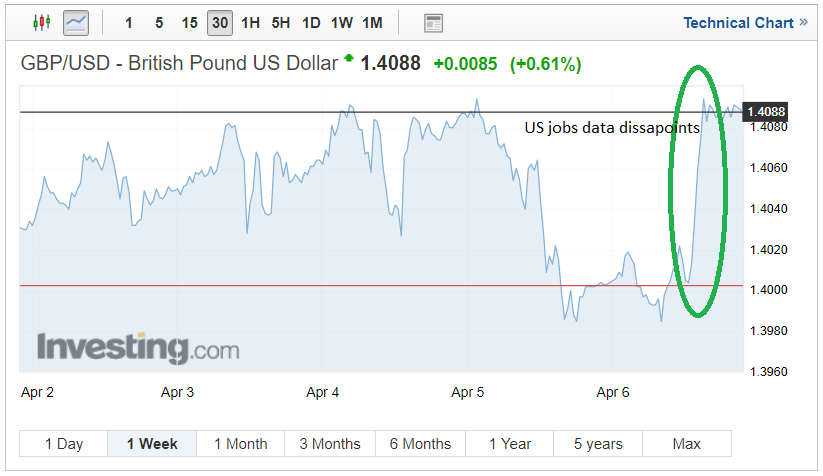US data rained down on Friday with key releases including, non-Farm payroll numbers, unemployment figures and the Average hourly earnings data which has become a number that could signal more impetus of future US interest rate rises.

Non-farms disappoint
The Non-Farm payroll numbers have often provided investors with comfortable reading as well as a steady indicator of economic growth. The rationale is simple, more in work the more they spend, in turn, the US economy grows due to higher consumer appetite for goods.
Last month’s non-farm payroll numbers had dazzled reaching a lofty 313,000 against a target of 205,000; greatly exceeding march’s target.
Although the US labour force continued to rise again this month it fell short of its forecast target of 188,000 managing an increase of 103,000. Concerns can easily be explained due to the rate of last month non-farms and no jitter was felt due to the forecast being missed. It’s also understood that adverse weather conditions in the north-west may have impeded workers from getting to their jobs.
Unemployment data
The US unemployment rate held steady at 4.1% missing the expectation of a 0.1% contraction which markets had been targeting. Although a slightly better unemployment rate was targeted it does, however, remain at the lowest level for over 18 years. It is also expected to remain steady for the longer term despite concerns surrounding NAFTA and a potential trade war with China.
On target average hourly earnings data key to US economy and consumer spending
In his last FED meeting, Jerome Powell voiced the FOMC’s concerns about the lack of growth in US wages which only grew 2.6% last year. This month’s data contrary to last month’s disappointing 0.1% remained on course demonstrating at 0.3% increase on month on month average hourly earnings. This data will have received much more interest and scrutiny than even the Non-farm payroll data. Wage growth alongside inflation remains pinnacle to the continual US economic growth in order to fuel consumer spending and the larger economy.
Currency pairs affected by the latest US data
Naturally, the limited growth in non-farm payroll numbers was detrimental to the Dollar. The GBP to USD currency pair benefited enormously from the news with Sterling rising roughly 0.6% following the news. The GBP- Dollar currency pair touched a high of 1.4094 before closing the weeks trading at 1.4088.
Before the jobs data, the Dollar had enjoyed positive movements with the greenback progressing nicely, the dollar index rose on Thursday with the Greenback appreciating by 0.41%. The index which essentially measures the Dollar against a trade-weighted group of 6 other currencies rose to a 2-week high.
The potential for Average hourly wages will have been viewed positively by the FED however following this month jobs data the likely hood of a June rate rise slipped slightly from 76% to 72% and therefore still remains more than likely if not certain.
This week’s key US economic data
As mentioned wage growth and inflation remain the real focus for the Federal reserve bank. This week is inflation economic data heavy this week with the following being released-
Month on month PPI, CPI and core CPI all released by Wednesday.
Wednesday also sees the release of this month’s FOMC minutes, market makers will naturally look for clues as to the next likely rate rise and interpretation of the US economy. The FOMC will also almost certainly have to comment on the state of US markets and the potential effects of a trade war with China.
